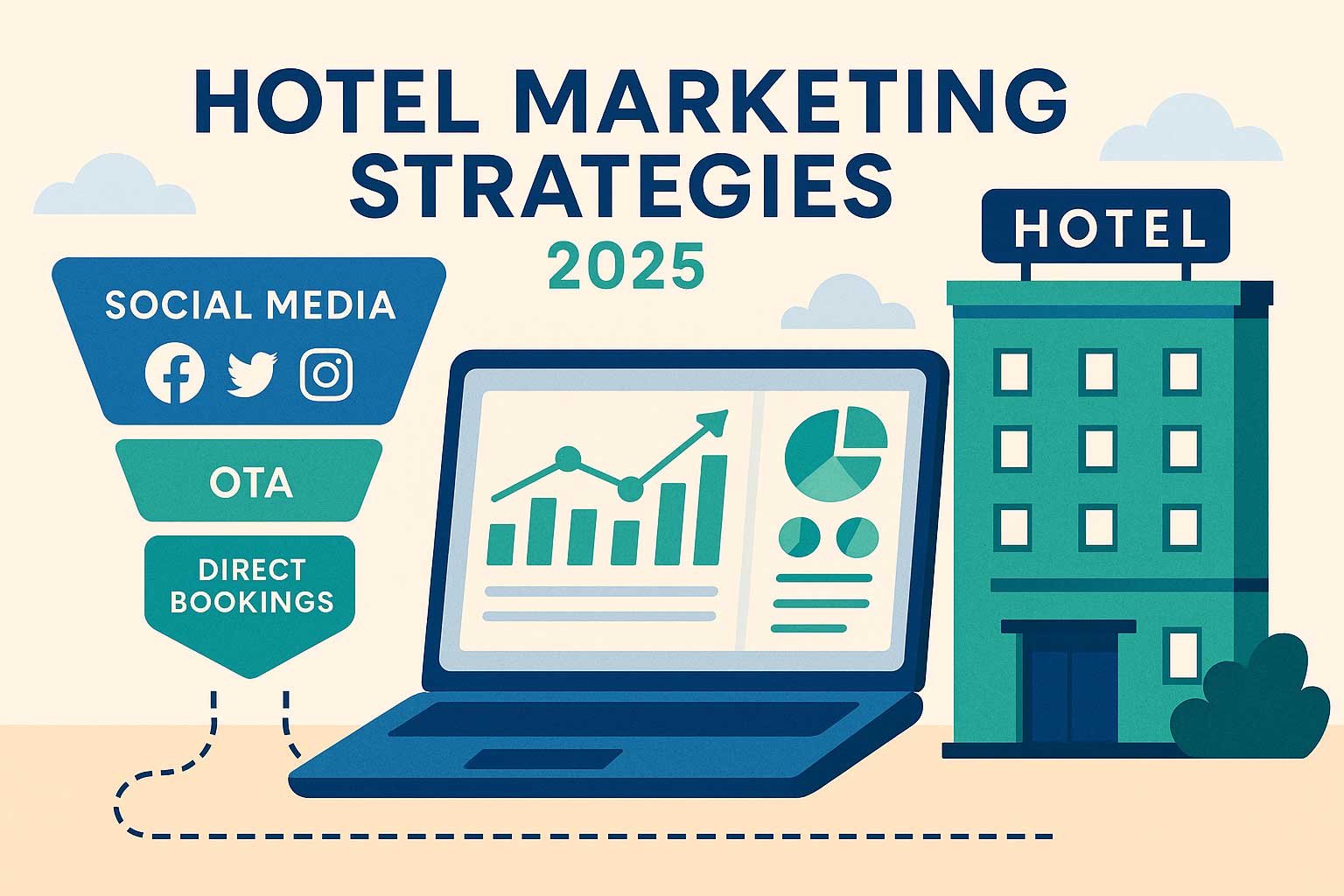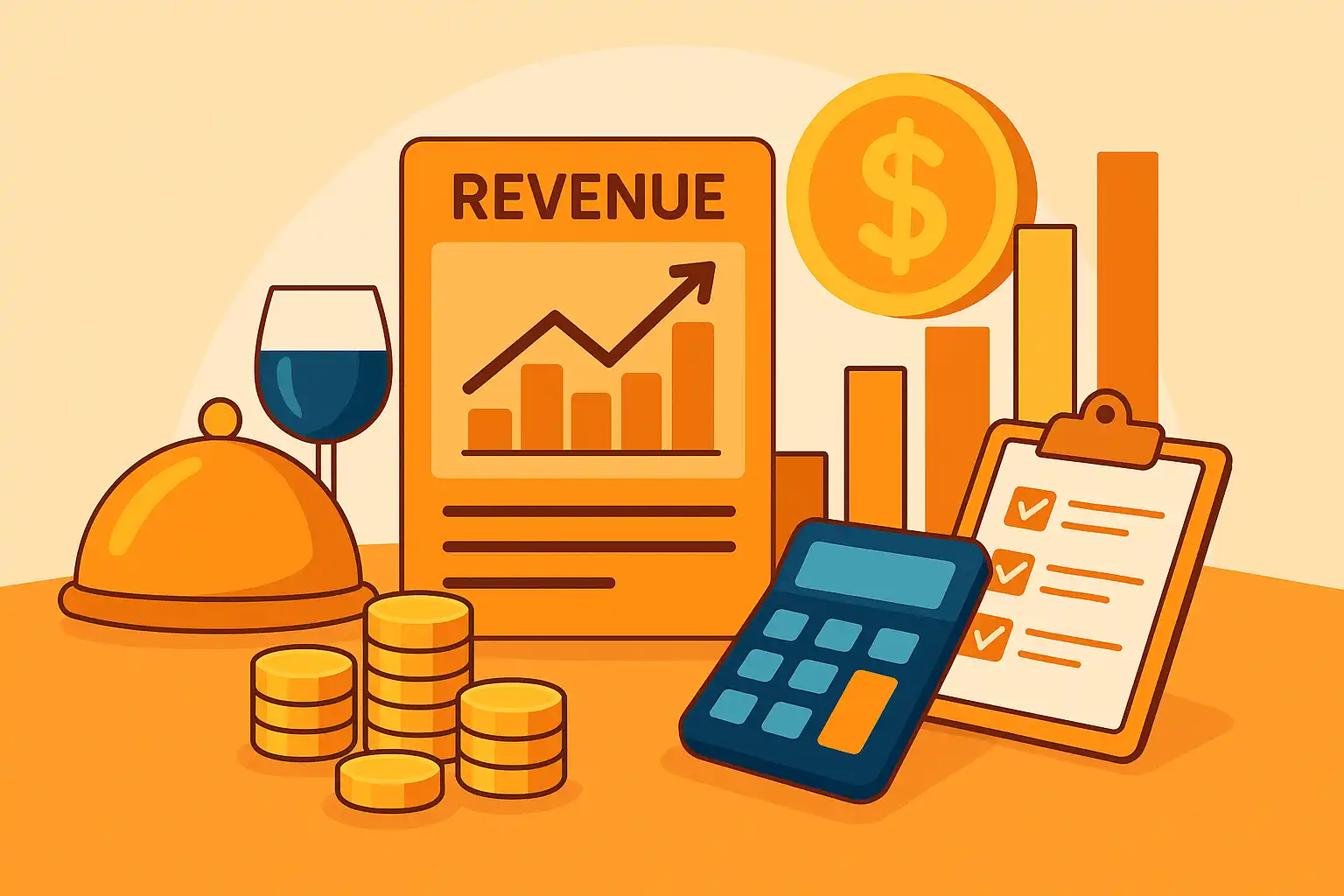How to Make Food & Beverage Revenue in Hotels Profitable
Nov 1, 2025
 Mika Takahashi
Mika TakahashiPopular Categories
Hotel Technology & InnovationHotel Operations OptimizationDigital MarketingIndustry TrendsRevenue ManagementHospitality Industry
Popular Categories
Trending Post

Hotel Walk Letter Template: Professional Guest Communication

Online Travel Agents: What They Are and How They Work

Hotel Security Systems: Modern Protection Solutions

Hotel Advertising: Complete Guide to Boost Bookings and Revenue

25 Hotel Marketing Strategy Ideas for 2025: Complete Guide

AI Reservation Agent: Revolutionizing Hotel Booking and Guest Experience

PMS Communication: Streamlining Property Management Through Effective Guest Messaging
Table of contents
Are you curious about how food and beverage revenue in hotels has evolved? What once served as just a simple guest perk has transformed into a vital profit center that can significantly boost your property's bottom line. Think of F&B operations as a bridge between guest satisfaction and your revenue goals—with the global hospitality industry expected to generate $4.9 trillion in 2025, hotel owners and general managers like you are discovering that F&B operations could contribute up to 80% of total revenue within the next decade. This shift highlights why understanding and optimizing food and beverage profitability is now more crucial than ever for hotels aiming to maximize their revenue streams and stay competitive in today's market.
This transformation from a cost center to a revenue driver reflects how guest expectations, market trends, and operational realities have evolved around you. Today's guests are spending about 4% more on food and beverage than they did back in 2024, opening up exciting opportunities for hotels that know how to tap into these changing demands. Yet, with labor costs eating up nearly half of F&B revenue and inflation pushing prices higher, succeeding in this space calls for smart strategies, operational excellence, and data-driven decisions that you can implement to stay ahead of the competition.

Understanding Fundamentals of Food and Beverage Revenue in Hotels
Are you wondering how much your food and beverage operations should be contributing to your hotel's bottom line? Here's what you need to know: typically, F&B revenue makes up about 25% of your property's total income, though this can swing dramatically depending on what type of hotel you're running and which market segment you're targeting. To get a crystal-clear picture of how you're performing, you'll want to calculate your total F&B revenue by taking those food and beverage sales, subtracting allowances (think discounts or complimentary items), and adding any other related revenue streams. This straightforward formula becomes your backbone for tracking how well your department is crushing it and comparing your results over time or against other properties in your portfolio.
Now, let's talk about allowances – because they come into play when things don't go quite as planned. Picture this: a meal that didn't meet your guest's expectations or a drink that needed to be swapped out. These allowances can include complimentary dishes you offer to make up for a hiccup or discounts you provide due to service delays. While these adjustments might seem like small potatoes, they can seriously add up and take a bite out of your profit margins. That's why keeping a hawk's eye on them is absolutely crucial for maintaining your food and beverage profitability.
Your hospitality business likely follows USALI (Uniform System of Accounts for the Lodging Industry) standards for categorizing revenue, though you'll have some flexibility in how you report these numbers. Think of these standards as your financial reporting compass – they help keep everything consistent and make it infinitely easier to compare your hotel operations across different markets. Mastering these basics empowers you to make smarter decisions about pricing, cost control, and revenue strategies that will boost your profitability.
But here's the thing – it's not just about tracking revenue. Key metrics like Revenue per Occupied Room (RevPOR) – which divides your total F&B revenue by the number of occupied rooms – give you a powerful way to benchmark your success against your peers and spot golden opportunities for improvement. Other game-changing indicators include your average check size, number of covers per outlet, and profit margins by revenue source. Together, these metrics paint a fuller, more vibrant picture of your F&B financial health and help you steer your operations toward greater success.
Current Market Performance and Regional Trends
The story of F&B revenue growth in 2025 is largely thanks to corporate group demand and a big jump in Conference & Banqueting revenue—food sales are up 8.9%, and beverage sales have risen 4.4% compared to previous periods. This comeback reflects the return of business travel and corporate events after pandemic disruptions, offering hotels a prime chance to capture and serve this demand effectively.
Looking closer at regional trends, Southern U.S. hotels consistently outperform those in the West when it comes to F&B flow-through and profit per available room (PAR). This suggests that factors like operational strategies, labor costs, and guest spending habits differ quite a bit by location. These regional nuances often tie back to local dining culture, competition, and economic conditions that shape how guests spend.
Market data also reveals that upper-upscale hotels bring in 57% of total F&B revenue industry-wide, while luxury hotels contribute 36% but earn noticeably more revenue per occupied room. This difference underscores the need to tailor F&B strategies to your property’s market position and guest profile. Luxury hotels might serve fewer guests but charge premium prices, whereas upper-upscale properties focus on volume and operational efficiency to drive sales.
Guest spending patterns have shown resilience, with a 4% increase in F&B spending in 2024 compared to 2019, although 2025 has seen a slight dip in some markets. This signals that while demand remains strong overall, hotels must keep adapting their offerings to keep guests interested and spending. The small decline this year might reflect economic uncertainties or shifting consumer tastes, so staying on top of trends is key.

Profitability Challenges and Cost Management
Labor costs are the biggest hurdle for hotel F&B departments, eating up 37% of expenses plus another 13% for taxes and benefits—meaning half of F&B revenue goes toward labor. This makes managing staff efficiently absolutely critical for profitability. Unfortunately, labor cost growth has outpaced revenue gains in many markets, pushing hotels to rethink staffing, service models, and operational efficiency.
Food inflation has surged by 25% in most markets, squeezing profit margins across all hotel types. From everyday ingredients to specialty items, rising costs have forced F&B managers to get creative with cost controls, menu engineering, and supplier negotiations. The challenge is balancing cost management with maintaining the quality and guest satisfaction that keep customers coming back.
In the UK, for example, hotel F&B margins have dropped from 30% to 22% due to minimum wage hikes and other cost pressures—a sharp reminder of how external economic factors can quickly affect profitability. While impacts vary by region, many markets face similar challenges.
Profit margins also differ by hotel segment: limited-service hotels often see 45%-50% profitability in F&B, while mid-market and luxury properties average 20%-25%. This reflects the simpler operations and lower labor needs of limited-service hotels versus the complex dining experiences full-service hotels provide. Understanding these differences helps set realistic goals and strategies.
Revenue vs. Cost Growth Disparity
In Europe, room revenue per available room (RevPAR) has climbed 17% since 2020, but F&B revenue has only increased by 5%. This gap highlights a disconnect—while rooms have bounced back strongly, F&B hasn’t kept pace, potentially pointing to missed opportunities or challenges in pricing and volume.
Rising costs for energy, ingredients, and labor continue to outstrip F&B revenue growth, creating a tough environment for hotel F&B directors. This imbalance threatens the sustainability of traditional F&B models and pushes hotels to innovate in service delivery, pricing, and cost control. It also underscores the need for more advanced revenue management in F&B.
Wage pressures and staffing shortages remain a big concern in early 2025, with many hotels struggling to balance service quality and labor costs. Minimum wage hikes, competitive markets, and high hotel turnover create a perfect storm, prompting hotels to explore technology, new service models, and staff training to keep guests happy without breaking the bank.
Strategic Approaches to Maximize F&B Revenue
One promising strategy is turning underused hotel spaces into vibrant F&B venues. With demand for nontraditional event spaces expected to grow by 4%, hotels are creatively repurposing lobbies, rooftops, and other areas into dining spots that offer unique experiences and command premium prices. This approach makes the most of existing assets while adding valuable revenue streams.
Offering continuous refreshment service instead of fixed meal times can also boost guest spending throughout the day. This flexible approach captures revenue during quieter periods and caters to guests’ varying schedules. Grab-and-go snacks, specialty coffees, and light meals available at different times encourage more frequent spending.
Embracing local cuisine trends and catering to dietary restrictions—vegan, vegetarian, gluten-free, dairy-free—helps hotels meet modern guest expectations and justify premium pricing. Travelers today want authentic, local flavors and need accommodations for food sensitivities. Hotels that excel here often see higher guest satisfaction and increased spending.
Creating memorable dining experiences—think rooftop lounges, craft beer tastings, chef-led events—turns food and beverage from a basic necessity into a highlight guests want to share on social media. These concepts typically enjoy better profit margins and help differentiate the hotel, attracting both guests and locals alike. The key is authenticity and alignment with the hotel’s brand and audience.
Technology and Operational Efficiency
Hotels using advanced hotel event services technology see nearly 2% higher F&B profit margins compared to those relying on manual systems. These tools improve inventory management, forecasting, labor scheduling, and guest service, often paying for themselves through better efficiency and less waste.
Mobile ordering apps let guests place orders from their rooms, poolside, or other hotel spots, boosting convenience and upselling chances. These systems cut down on labor for taking orders and increase accuracy, enhancing the guest experience.
AI-powered food waste management helps reduce costs while maintaining quality. By analyzing purchasing and consumption patterns, these systems optimize ordering and menu planning, lowering food costs and supporting sustainability goals.

Group Events and Corporate Revenue Drivers
Group events make up half of hotel F&B business, especially in upscale and luxury hotels with ample meeting space. These events tend to generate higher revenue per guest and better profit margins than individual diners, thanks to economies of scale and streamlined labor deployment.
Corporate groups also boost profitability by providing predictable volume and standardized service needs. Knowing guest counts and menus in advance lets F&B teams plan staffing and preparation efficiently, controlling costs while delivering consistent quality.
For hotel event planners, F&B ranks as the third most important factor in site selection after location and price. High-quality food, flexible menus, and excellent service can be the deciding factor in winning group business. Hotels that excel in these areas often enjoy repeat bookings and strong corporate relationships.
Currently, 61% of hotel GMs and F&B Directors plan to grow catering and banquet sales, recognizing the lucrative potential of group business. This focus not only drives F&B revenue but also boosts other hotel areas like room bookings and spa services, making group business a key profitability driver.
Best Practices for F&B Operations
Adopting a restaurateur mindset—thinking beyond just a hotel amenity—can transform F&B operations. This means understanding local dining trends, guest preferences, and competition to create concepts that stand on their own as successful businesses. Hotels that get this right can boost guest satisfaction and profitability.
Choosing the right outlet types based on guest behavior and market demand helps optimize investment and operations. For example, a lobby coffee shop might energize the space better than a bar during the day, depending on guest demographics and local trends.
Hiring experts like restaurant designers, menu consultants, and digital specialists ensures authentic and competitive culinary experiences. With hotels competing against local restaurants as well as other hotels, professional input can make all the difference.
Focusing on local demand with targeted F&B concepts, rather than trying to please everyone, builds stronger market positions and sustainable revenue. Creating community interaction through locally inspired dining can attract non-guests and enhance the hotel’s reputation.
Future Outlook and Investment Priorities
As room demand growth slows in many markets, F&B’s role as a diversified revenue stream becomes even more important. Generating income from multiple sources helps hotels reduce dependence on room sales and smooth out cash flow.
U.S. hotels currently enjoy stronger F&B profitability than many European counterparts, thanks to better labor cost structures and a faster corporate demand recovery. Still, this advantage requires careful management as market conditions evolve.
Guest spending is shifting toward wellness and leisure, opening new doors for F&B offerings like healthy dining, specialty beverages, and experience-driven food services. Hotels that innovate in these areas can capture new revenue and stand out from competitors.
Integrating F&B with other hotel operations and forming strategic partnerships is increasingly vital. Coordinating with spa, recreation, and room packages creates seamless guest experiences that boost total revenue. Collaborations with local food and beverage providers can enhance offerings while sharing risks and costs.
Accommodating requests for food sensitivity and dietary restrictions is becoming a must. Hotels that manage these well often see higher guest satisfaction and repeat business, turning this capability into a competitive edge.
Looking ahead, success in hotel food and beverage hinges on balancing innovation with efficiency, local relevance with brand standards, and growth with cost control. As hospitality moves toward experience-focused offerings, F&B expertise will be more valuable than ever, requiring ongoing investment in talent, technology, and creative concepts.
In short, hotels that treat food and beverage not just as an add on amenity but as a strategic priority will unlock the greatest potential for hotel revenue growth and profitability. The data is clear: food and beverage revenue in hotels is set to play an increasingly important role in long-term success in this competitive industry.
